Australia So Much to See


Heading through South Australia towards New South Wales, and an opportunity see Southern Right Whales and their calves at Head of Bight
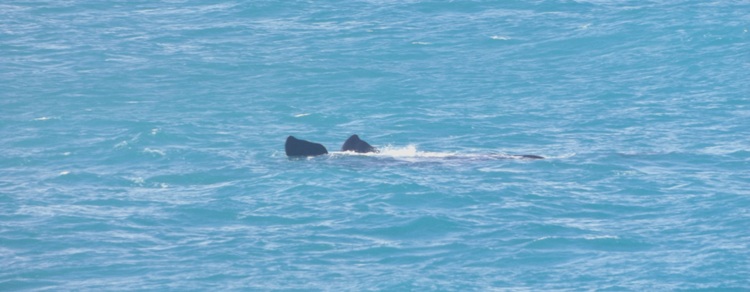
Southern Right Whales at Head of Bight take up 'residence' for a five month period between June and October and generally remain within
a fifteen kilometre section of coast. Calves are born and reared here in the relative safety of the bay. At the height
of the season, in excess of one hundred whales can be in the bay.
Ideally binoculars or a good camera with a high zoom
function will enhance viewing.
There are walkways and viewing platforms, sloped to be wheelchair accessible. A series of steps go down to the beach, but from the top good views west can be enjoyed; both along the Bunda Cliffs to the west and to the east of the Head of Bight, the cliffs give way to sand dunes.
The dunes, which have developed over thousands of years,
are moving inland at a rate of eleven metres per year.
Entry fees apply and are payable at the Head of Bight Whale Centre
on site. Current prices peak season fees are $15 per person, and concessions apply. Please see Head of Bight for full fee
schedule and for Head of Bight Whale Centre opening times in peak and off peak seasons.
From signage on site:
Pregnant whales remain near the shore for a while after calving.
Calves stay close to their mother's side. Both mothers and calves frequently touch each other. As the calves grow they move away from their mothers and play with other calves.Found only in the Southern Hemisphere, Southern Right Whales were hunted until the population was reduced
to only few hundred individuals. Protected internationally since 1935, the species now remains endangered despite numbers increasing
at 7-8% per year, numbers remain at a fraction of what there were pre-whaling.
Head of Bight is a significant breeding
area, with 10% of the global population using the area.
Aboriginal stories tell how Wanampi, a giant snake, lived under the caves and blowholes in the east, and how the Kokata people drove him out of the northern mountains and down the coast. The vents and blowholes made his breathing sound like roaring.
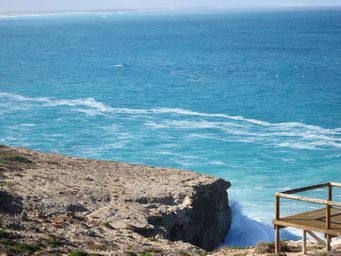
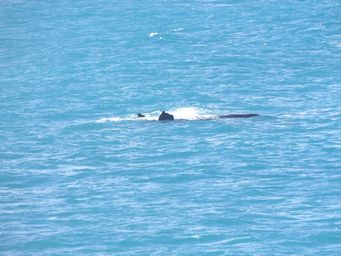
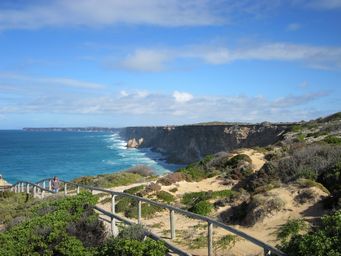
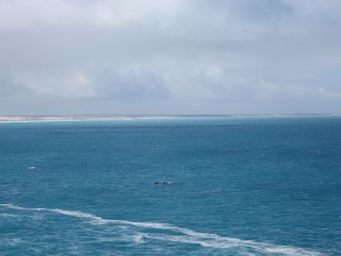
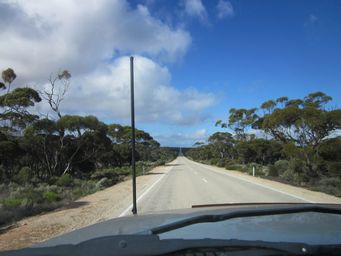
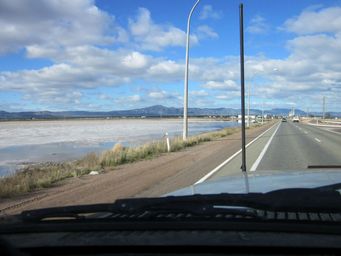
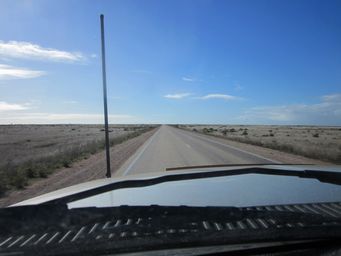
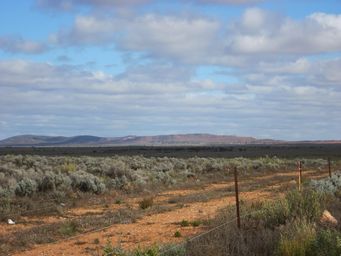
A crumbling coastline along the Bunda Cliffs at left, with sea spray as the often rough waves of the Great Australian
Bight meet the cliff faces.
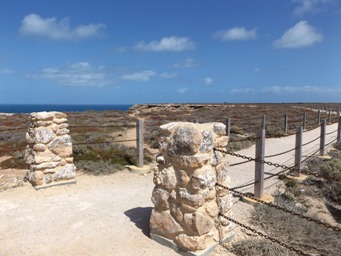
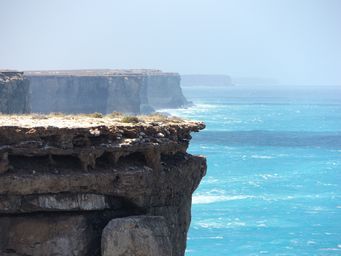
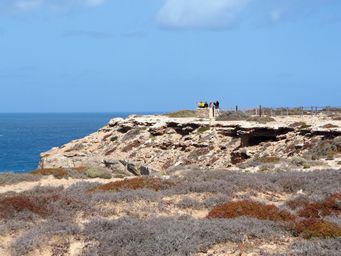
Head of Bight Whale Watching
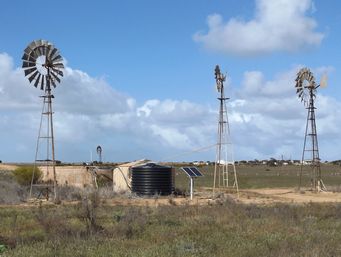
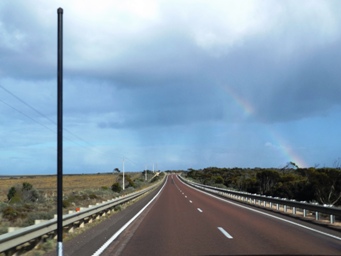
Above right shows wheat receival silos at Penong, a small town 73 kilometres west of Ceduna. Penong is known for having many windmills, and a collection of these can be seen on the eastern edge of the town. Photo above left shows older windmills, now superseded by a solar powered pump. Some small windmills were portable, and a windmill on wheels can be seen in the photo above right.
Well serviced with shops and businesses, it well situated to fill up with fuel and re-stock the larder, whether you have just come across the Nullarbor, or are about to commence that journey.